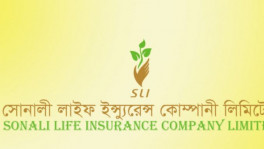Harvesting rain can meet RMG’s 60% water demand: Study
Speakers said at a roundtable discussion organised by WaterAid and BGMEA

The textile and readymade garment factories can meet up to 60% of the demands of non-drinkable water through harvesting rainwater, which would help them reduce dependence on groundwater, according to a study.
WaterAid and the RAiN Forum found this in a survey jointly conducted on 65 textile and garment factories to identify the opportunity of rainwater harvesting and its uses.
Some 12 factories have 2,000 square metres of rainwater catchment areas, while 40 have 2,000-8,000 square metres and 13 have 8,000 square metres, said the study.
The study findings were presented at a roundtable titled 'Industrial Rainwater Harvesting: A Sustainable Approach to Water Management,' organised jointly by WaterAid and Bangladesh Garment Manufacturers and Exporters Association (BGMEA) at The Westin Dhaka on Tuesday.
"The harvested rainwater can meet even 100% demands of non-drinkable water in some garment factories which do not have the dyeing and washing units," said Ashraful Alam, member secretary of the RAiN Forum presenting the keynote paper.
Rainwater harvesting reduces groundwater consumption, operational costs and power and saves the earth. It could also be used mainly for flushing in the washrooms, car-washing and watering the garden, he added.
The annual demand for non-drinkable water in 17 factories is 10,000 cubic metres, between 10000 and 50,000 cubic metres in 32 factories and 50,000 cubic metres in 16 factories, the study found.
Thirty-four factories have the potential of rainwater harvesting of 10,000 cubic metres annually, 15 have 10,000 to 30,000 cubic metres and 16 have 30,000 cubic metres, the study said.
It further mentioned that six factories meet 15% of the non-drinkable water from the harvested rainwater, 39 meet 15% to 60% and 20 meet 60% of the demands for water from the harvested rainwater.
Speaking on the occasion, Hasin Jahan, country director of WaterAid said the country's industries are dependent on groundwater. But the reality is Dhaka city's groundwater level is depleting by one to three metres every year.
In some areas, especially in Tejgaon and Mirpur, the water level has gone down drastically.
This scenario gives us a clear concept about the water shortage, it is time to become aware of the water supply sources. In such a situation, it is important to have a rainwater harvesting plant in every factory, she added.
"An entrepreneur needs to invest Tk65 lakh to make a reservoir in the factory area to harvest the rainwater and its payback period is seven to 10 years," said Hasin Jahan.
The chief guest of the event BGMEA President Faruque Hassan said, "BGMEA as a progressive association has emphasised the sustainable water resource management and is actively encouraging factories to adopt rainwater harvesting systems. It is the time that industries emphasise on rainwater and help reduce extraction and dependence on groundwater."
He also mentioned that currently, Bangladesh is the global champion in the green garment factories having 157 Leadership in Environmental and Energy in Design (LEED) certified garment factories which have been saving on an average 40% power and water with improved efficiency.


 Keep updated, follow The Business Standard's Google news channel
Keep updated, follow The Business Standard's Google news channel














